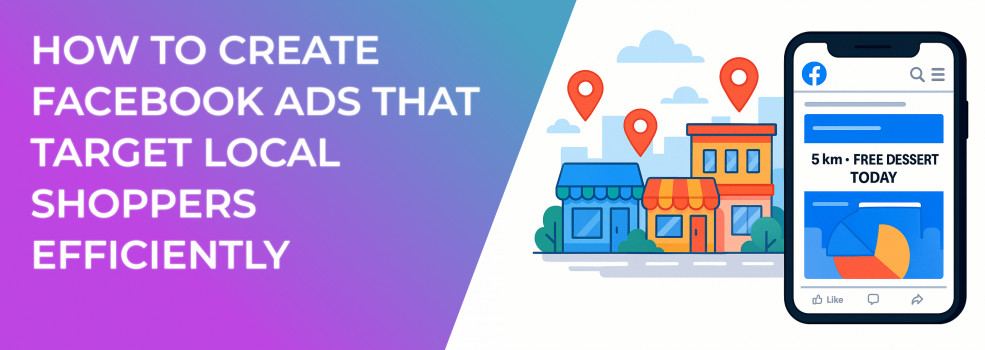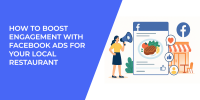Local shoppers scroll fast and buy faster, yet they quickly ignore anything that feels generic or far away. A smart Facebook ads audience targeting strategy lets you appear at the precise moment people nearby are ready to spend. Below you will find a detailed playbook packed with Facebook ad targeting options, practical examples, and tips that keep wasted spend to a minimum.
1. Research First: Understand the Mindset of Nearby Buyers
Before touching Ads Manager, dive into Meta’s Audience Insights or the extra segmentation tools inside LeadEnforce. Describe your customer in writing so the details guide every later decision. For a deeper dive into the mental triggers that make locals stop scrolling, check out The Psychology of Facebook Ads: How to Hook Your Target Audience in Seconds.
What to check
-
Age, gender, household status, and job titles.
-
Spending patterns such as “coupon clippers” or “in-store shoppers”.
-
Local interests like community festivals, sports teams, and neighborhood Facebook Groups.
Use Meta’s data to turn “people nearby” into a crystal-clear buyer profile.
By mapping these traits you transform a vague idea of “people who live close” into a target audience in advertising that Meta can actually reach. After completing your outline write down one line on what truly makes a buyer local (is it a delivery radius, a dialect, or a daily commute). Revisit that line whenever performance dips.
2. Pick the Ideal Objective and Placement
Your goal controls how Meta’s system optimises delivery. For brick-and-mortar stores or service areas choose Store Traffic, Leads, or Sales. Begin with automatic placements then inspect reports after three days.
Additional context before the list: Although Advantage+ Placements usually provide lower CPMs, many local advertisers discover that Marketplace and Stories underperform once early learning ends.
Recommended placements for local campaigns
-
Facebook News Feed and Instagram Feed because discovery happens here.
-
Facebook Marketplace if you sell physical items that encourage spontaneous pick-up.
-
Reels and Stories to catch people who habitually swipe short-form video.
If eighty per cent of your spend lands in a single placement that drives zero purchases, turn that placement off and concentrate budget on proven performers.
3. Fine-Tune Location-Based Targeting
Radius targeting is the foundation of local advertising Facebook ads yet most brands leave precision untapped. Inside the Locations box you can make subtle but critical adjustments.
-
Choose “People living in or recently in this location” to convert tourists and commuters.
-
Choose “People living in this location” when your service requires a permanent address such as residential plumbing.
-
Stack multiple ZIP or post codes instead of a large radius to prevent spillover into neighbourhoods you cannot serve.
-
Exclude overlapping cities that siphon budget.
If you need extra inspiration on radius and ZIP-code tactics, our guide to Hyper-Local Facebook Ad Targeting: ZIP Code Strategies That Convert breaks it down step-by-step. Even a one-kilometre shift in your geo-fence can raise click-through rate by double digits because every impression feels relevant.
4. Layer Your Audiences for Scale and Efficiency
A single ad set rarely moves the needle. Combine three layers so Meta can locate both high-intent and net-new buyers.
New to segmentation? Read Everything You Need to Know About Facebook Ads Audiences for the full glossary before you build your warm, lookalike, and interest stacks.
Before we show the table remember this principle: warm data converts quickly, lookalikes widen the net, and interest stacks fill gaps in volume.
Keep each layer in its own ad set so budget can automatically shift toward whichever delivers the lowest cost-per-action this week.
5. Activate Detailed Meta Targeting Options
If you want to squeeze every impression for relevance, experiment with one new criterion at a time. Adding too many will collapse audience size and strangle delivery.
Detailed targeting works best once you collect at least fifty conversions because Meta’s algorithm then recognises clear purchase signals.
To uncover hidden purchase signals, study Using Life Events and Behaviors for Smarter Facebook Targeting — it pairs perfectly with the tactics below.
-
Behaviors such as Holiday Shoppers, Frequent Travellers, or Small Business Owners.
-
Life events such as Recently Moved or New Parents which often correlate with heightened spending.
-
Demographics such as homeowners versus renters, perfect if you wondered how to target homeowners on Facebook ads.
When your data pool is small, enable Advantage Plus Audience Facebook ads expansion so Meta automatically finds similar users beyond your manual filters.
6. Craft Creative That Screams “We Are Right Here”
Images and copy must instantly tell locals that your offer is truly near them. Generic stock photos destroy trust.
-
Show familiar landmarks or street signs (“Only 300 m from the Parliament Building”).
-
Feature real staff and customers to confirm authenticity.
-
Promote same-day perks (“Order by 2 pm, pick up in District 7 tonight”).
Need fresh copy ideas that still feel authentic? Crafting Compelling Facebook Ads Copy That Converts walks you through proven frameworks.
Pepper location cues into headlines, for example, “Free Dessert for Budapest Foodies This Week” then test a dynamic text overlay that swaps city names automatically when you run multiple locations.
7. Control Budgets and Bids for Sustainable Growth
Smaller audiences mean you will hit ad fatigue faster, so rotate creative more aggressively than you would in a nationwide campaign.
Practical steps
-
Launch with Campaign Budget Optimisation (CBO) so Meta pushes extra spend toward the best-performing ad set.
If you run on lean budgets, Daily Budget vs CBO: Which Delivers Better Performance for Local Ads compares real-world results and shows when to switch. -
Once you know an acceptable CPA, switch to Cost Cap bidding to lock profit margins.
-
Monitor frequency daily; if you cross 4–5 impressions per user and results dip, refresh visuals and copy.
Campaign Budget Optimization often wins — prove it in your own account.
These tweaks prevent budget bleed and maintain a healthy relevance score which in turn lowers CPM.
8. Measure, Optimise, Repeat
Data only matters when you act on it. Schedule thirty-minute performance reviews twice a week and focus on actionable metrics.
Beyond click metrics, bookmark How to Analyze Facebook Ad Performance Beyond CTR and CPC to spot true profit drivers.
-
Customise columns for Cost per Store Visit, Calls, or any offline conversions you have integrated.
-
Break down results by placement and by ZIP to discover hidden winners.
-
Pause any segment that runs at double your target CPA and push savings into high performers.
Over time export your newest buyers into a custom audience Facebook ads list, then create fresh lookalikes. This simple habit keeps your reach pool alive and ensures your ads remain highly relevant.
Final Thoughts
Building efficient Facebook ads for local businesses is not about outspending competitors but about turning each impression into a personalised invitation. By mixing accurate geo-filters, layered audiences, detailed Meta targeting options, and neighbourhood-specific creative you will transform scrolling neighbours into paying customers while keeping ad spend in check.

